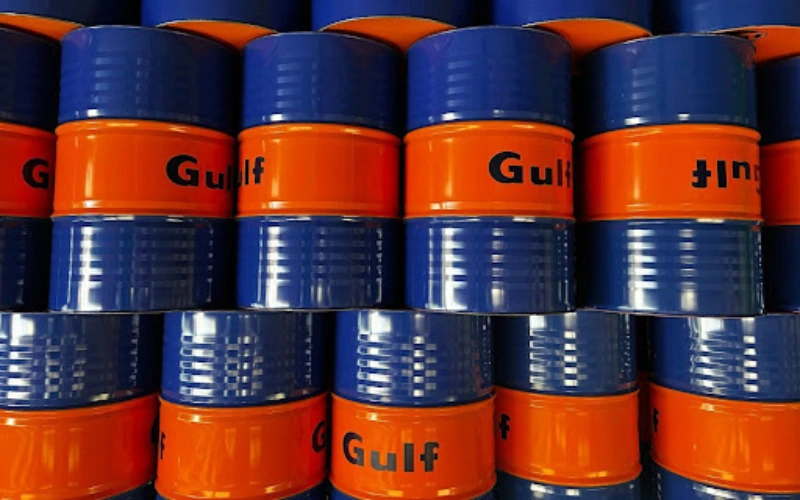Engine Oil and Lubricant Storage and Handling Best Practices
10 Apr 2025

From farms to factories, proper lubricant storage is a must.
Industrial, agricultural and construction environments all require the use of a range of lubricants, greases and crop protection that can cause harm when not handled properly. Meanwhile, any loss or accidental spillage causes spiralling costs, not only for the replacement fluid but for the clean-up operation too.
In this quick guide, we’ll cover everything you need to know about the proper storage of lubricants so you can confidently protect workers, minimise risks, and maintain smooth operations.
Why proper lubricant storage and handling matter
While it may seem like an inconsequential matter in the grand scheme of things, proper lubricant storage impacts multiple areas of your operation.
When you follow best practices for the storage of lubricants and fluids, you can:
- Maintain product quality: When stored correctly, you prevent lubricants from getting contaminated or degrading prematurely, ensuring they perform as intended.
- Enhance safety: Aside from creating a mess that’s difficult to clean, oil spills and leaks cause accidents.
- Protect the environment: The responsible handling and waste management of any lubricants you use prevents unnecessary pollution and environmental contamination.
- Reduce costs: Proper lubricant storage prevents unnecessary waste, reduces downtime associated with spills and accidents, and keeps fluids performing at their best, reducing maintenance costs.
Best practices for storing oils and lubricants
Ideal storage environment: Indoor vs outdoor

The ideal lubricant storage environment is indoors or under cover, protected from extreme temperatures or external contaminants. Here are some things to bear in mind depending on where you store your lubricants:
- Indoors: Use purpose-built storage racks to ensure lubricants can be easily shelved and organised. Keep all lubricants horizontal to prevent leaks and moderate the temperature to avoid extremes and fluctuations.
- Outdoors: Protect lubricants from rain, snow and direct sunlight with a robust shelter. Upright containers should be covered at all times and consumption should be carefully monitored to avoid overstocking or spoilage.
Whether your lubricant storage space is located outdoors or indoors, be sure to reseal containers when not in use to prevent contamination. All opened drums or containers should be labelled with a clear description of the contents, date of opening, and compatibility notes.
Keep your storage organised
Keeping your lubricant storage space clean and well-organised is one of the best ways to prevent spills and waste. Use a robust shelving system that makes it easy to access the required lubricants, with ample room to prevent damage to the containers.
Implement an inventory rotation system where newer products are placed at the back to ensure the oldest products get used first.
Finally, take the time to regularly inspect your lubricant storage space for leaks, damaged containers or contamination. Keeping the area clean and free from debris reduces the risk of impurities affecting the performance of your lubricants, while minimising the risk of accidents.
How to safely handle oils and lubricants
Of course, the greatest risk of accidents comes from the handling of oils and lubrications, which is why it’s important to take precautions. Here are some best practices:
- Use Personal Protective Equipment (PPE): Ensure anyone responsible for handling oils and lubricants uses gloves, goggles and protective clothing to avoid direct contact with skin or eyes.
- Purchase proper handling tools: It’s tempting to use whatever you have to hand to transport and dispense lubricant, but this is typically how spills occur. Purchase pumps, trolleys, and dispensers that are fit for purpose as opposed to using makeshift equipment.
- Avoid cross-contamination: Every container and piece of dispensing equipment should be clearly labelled with an alphanumeric tag or colour coded. If your lubricant storage area is outdoors, make sure tags are weather-resistant.
- Filter when transferring: Depending on the equipment specifications, use high-efficiency filters when transferring lubricants. For moist environments, implement a two-stage filtration system, including water-absorbent filters.
- Be proactive in preventing spills: Place spill trays underneath containers during the transfer process to make cleanup quick and easy. If any spills do occur, clean them immediately and dispose of the waste responsibly according to local guidelines.
Training, monitoring and maintenance

Once you have set your lubricant storage area up as outlined above, make sure everyone in your team knows how to prevent accidents, reduce waste and maximise efficiency.
Create a rota or assign someone responsible for regularly inspecting the lubricant storage area for leaks, damaged containers, and cleanliness. All inspections should be logged. If any action was taken such as a spill clean-up or container replacement, this should be clearly flagged as well.
Employee training
Every new employee should be briefed on proper lubricant storage and handling practices, including safety protocols and equipment use. Regular training sessions with current employees help keep the information front of mind.
Any member of the team who is responsible for handling lubricants should also have access to all of the necessary safety data sheets (SDS) and procedures.
Promoting a safety culture
Make it easy for people to report risks or issues by promoting an open and friendly working culture – where honest mistakes are not harshly reprimanded. Stay abreast of the latest safety tips and regulatory changes and pass any knowledge learned to your team in regular training sessions.
With clear and actionable guidelines, the proper equipment, and a culture of teamwork, everyone can become a lubricant storage and handling specialist.
This ensures your operation handles lubricants at the highest standards of quality and safety, not only protecting your team from accidents but boosting profits and efficiency too.
Browse our wide range of high-performance lubricants for the agriculture, marine and industrial industries, and see how Gulf Oil could transform your operation today.

